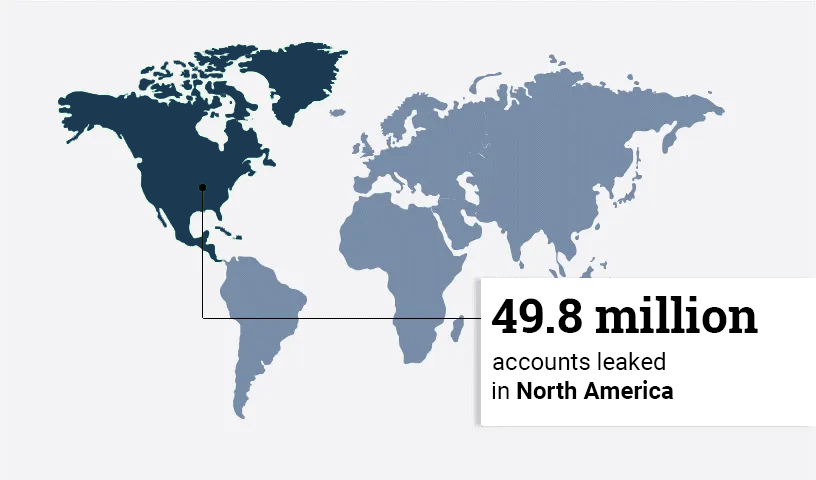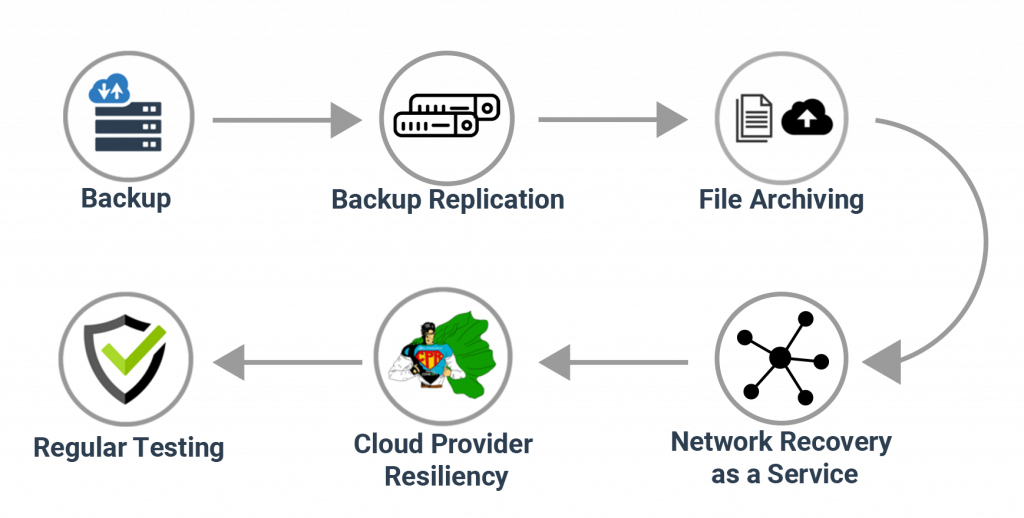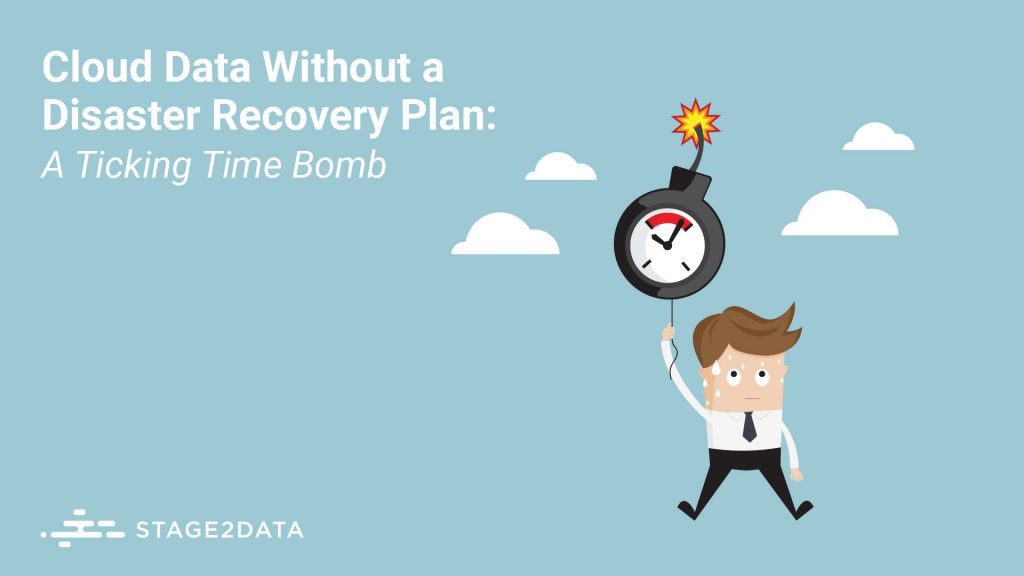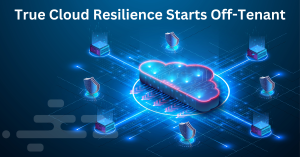Many businesses still believe they can keep all their data securely in-house. Yet, countless incidents of data losses due to unexpected catastrophes tell a different story.
This is very clear when you look at the data: In Q2 of this year alone, North America had the highest number of breached accounts, with 49.8 million accounts leaked. Plus, business owners must still implement data protection and disaster recovery measures for their public and private cloud data. Even with public cloud providers like Azure, Google and Amazon.
The good news is you don’t have to become another statistic; you can protect your business and your data.
Transitioning to cloud-based disaster recovery not only provides enhanced security but also ensures low downtime and increased data availability. Yet, many businesses are hesitant to make the shift, clinging to antiquated methods for fear of the complexity and cost of cloud solutions.
It’s time to level up your protection game, and we explain how and why below.

Understanding Disaster Recovery
In the digital age, data is the lifeblood of businesses worldwide. It’s what fuels our operations, informs our decisions, and empowers our recovery strategies. And it’s not immune to threats.
Disasters or disruptions can take many forms, each posing a unique threat to business data:
- Cyberattacks, including ransomware, can compromise your systems, stealing or encrypting valuable data for ransom.
- Human errors, such as accidental deletions or system changes, can also lead to data loss.
- Natural disasters such as earthquakes, floods, and fires can wreak havoc on your physical infrastructure and lead to significant data loss.
How would your business cope if its data was suddenly lost or compromised?
No matter which type of disaster eventually ‘gets’ you, data loss can have far-reaching effects on your business. Here are just a few potential impacts:
- Operational disruptions: Losing critical data can stop your operations in its tracks, causing significant disruption and financial loss.
- Reputational damage: Data breaches/data loss can erode customer trust and tarnish your brand’s reputation.
- Regulatory fines: If you’re handling sensitive customer data, a breach could result in hefty penalties under data protection laws.
At this point, you may be wondering if it’s truly possible to protect your data? This is where disaster recovery comes into play.
The Role of Cloud Technology in Disaster Recovery
The cloud, a virtual space that stores data over the internet, has become the superhero of the business world. With its power to store information remotely, it acts as a safety net, catching and protecting your data even when disaster strikes at your primary site.
Imagine this: One of your staff unknowingly clicks on a phishing email. This triggers ransomware that swiftly spreads through your company’s network, encrypting all data and halting operations. In an instant, all your critical business information is inaccessible.
Typically, you would panic if this happened. With cloud disaster recovery – especially if it includes Cloud Provider Resiliency (CPR)™ – there’s no need for panic. Your data isn’t lost in the abyss. Your virtual machines and data are safely tucked away in the cloud, ready to be restored either to your local data center or a cloud service provider, promptly restoring business operations.
The best part is it doesn’t have to cost an arm and a leg.
So, how does it work? It’s a carefully orchestrated process that we’ll clarify below. First, let’s look at how cloud disaster recovery compared to traditional disaster recovery methods.
Cloud disaster recovery vs traditional disaster recovery
Cloud disaster recovery and traditional disaster recovery are two different approaches to backing up data and applications in case of a disaster. Let’s compare:
| Cloud disaster recovery | Traditional disaster recovery | |
|---|---|---|
| Storage | No need to build a secondary site or buy additional hardware or software to support ops. Hour cloud storage acts as a secondary DR site. | Traditional disaster recovery needs a secondary data center to store all redundant copies of critical data, and to which you can fail over production workloads. |
| Scalability | Easy to scale up or down by simply adding cloud computing resources. | Can only scale by purchasing additional computing equipment. |
| Pricing model | Affordable pay-as-you-go pricing model. You only pay for the services you actually use. | Support and maintenance of a physical DR site can be very expensive and time-consuming. |
| Speed | Cloud DR can be performed in minutes from anywhere. | Typically slower than cloud DR. |
| Geographical locations | Your backed-up data can be stored across a number of geo-locations, eliminating a single point of failure. | Traditional disaster recovery typically involves a company's physical DR site being located at the nearest feasible geographical location. |
| Infrastructure | State-of-the-art network infrastructure means that any errors can be rapidly identified and addressed by a cloud provider. | Traditional disaster recovery involves a company owning and maintaining its own hardware and infrastructure. |
How Cloud-based Disaster Recovery Works
Cloud disaster recovery combines cloud services such as CPR™ and DRaaS and strategies to store backup data, apps, and other resources in cloud storage using either public clouds or a dedicated cloud service provider. The goal is to help organizations minimize downtime and data loss to ensure business continuity, lower costs, and reduce complexity.
But not all cloud-based disaster recovery solutions are created equal. There are a number of things to consider when choosing the right solution. Let’s walk you through the various solutions Stage2Data deploys to ensure your data is as secure as a vault.

Backup: The first step in any disaster recovery strategy is to ensure that all business data is regularly backed up. This can be achieved by implementing a scalable backup and recovery plan that offers peak performance and simplifies backups. Stage2Data uses S3 Compatible Object Storage.
Backup Replication: If you’re using a third-party ISP but still replicate your environment to the Stage2Data private cloud, our failover system redirects requests from a failed critical system to a backup, minimizing downtime. Once resolved, our failback process transfers your data from our DRaaS environment back to your primary site, restarting replication processes for continuous protection.
File Archiving: Offload less frequently accessed files that require long-term retention to Stage2Data’s private cloud. This low-cost storage solution not only saves local storage capacity but also reduces the load on your infrastructure and minimizes the size of backups.
Network Recovery-as-a-Service (NRaaS)™: As an ISP, we prepare your data and VMs for a complete site failure by ensuring that your local enterprise resources can be spooled up in the Stage2Data cloud while maintaining your public IP address, meaning your network and firewalls remain unchanged during and after failover.
Cloud Provider Resilience (CPR)™: To further enhance your disaster recovery strategy, we replicate your entire cloud environment in Stage2Data’s private cloud environment. With this approach, your local environment and network run parallel with the replicated environment in our private cloud. This adds an extra layer of data resiliency in case of failure of your cloud or hyperscaler environment.
Regular testing: Our DR testing runs smoothly in the background, ensuring your operations and applications carry on without a hitch. This seamless approach not only ensures effortless compliance with legal regulations but also keeps us on point with our service level agreements.
Choosing the Right Cloud-Based Disaster Recovery Solution
Choosing the right cloud-based disaster recovery solution isn’t just a smart business decision; it’s a safeguard against the unpredictable.
- First, security is paramount. Look for solutions that offer top-notch security features like data encryption, secure access controls, and regular security audits.
- Second, the cost can’t be overlooked. Evaluate both the upfront fees and ongoing costs for storage and maintenance.
- Third, look for proven expertise. Choose a service provider that has successfully handled real-world incidents for companies like yours.
- Lastly, user-friendliness is key. A solution should be easy to navigate with a responsive customer support team at the ready.
So, choose wisely, arm your business with resilience, and let the cloud be your safety net in a world of digital uncertainties.
Final Thoughts
The unfortunate reality is that data loss can happen to any business, even with their data in the cloud. That’s why disaster recovery is an essential part of any successful business. Cloud-based disaster recovery services and DRaaS offerings are cost-effective, scalable, and accessible solutions that eliminate the need for expensive on-site infrastructure, making it a financially smart choice regardless of your business size.
As your business expands, so does your cloud storage capacity, growing seamlessly alongside you. Plus, data stored in the cloud can be accessed anytime, anywhere, ensuring your business stays up and running, no matter what.
Plus, with the cloud solutions and resources that are available today, cloud disaster recovery is easy and affordable for companies of all sizes.
Get in touch, and let’s start building your business’s future.





